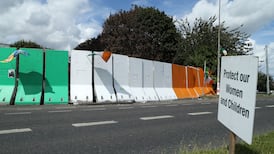SOON AFTER Ayatollah Ali Khamenei delivered his chilling warning to Iran’s opposition on Friday to end rallies or face punishment, a strong wind blew in Tehran, as if to reinforce the fear in the hearts of those who had spent much of the week protesting against the previous week’s election.
The outrage of the opposition at the supreme leader’s insistence that the game was over and the hardline Mahmoud Ahmadinejad had been fairly elected was expressed loudly that night.
People took to their rooftops to shout Allahu Akbar!, God is great, the symbolic cry of defiance they have borrowed from the 1979 Islamic revolution.
Everyone in the opposition knew that Saturday would be tense and a crucial moment for their fledgling movement. There was a rally planned that afternoon on Enghelab or Revolution Square, site of some of the most violent protests in 1979.
On Saturday morning, the ministry of the interior told Mir Hussein Mousavi, the candidate the supporters have rallied behind, he would be held responsible for any violence.
Tehran had an air of eerie normality, though, as heavy rain fell on the city, unusual for the time of year. But as the rally approached and the skies cleared, witnesses reported that the squares all over Tehran were invaded by riot police, and plain-clothes pro-government militias, with their batons and shields.
“Guardians of people’s safety; allies of the supreme leader,” was the message printed on some of the police shields.
Around Revolution Square, the deployment was so heavy one witness joked that, however many people showed up, riot police would outnumber them. Some security forces were carrying Kalashnikov rifles for the first time, said the witnesses.
At lunch, in a restaurant in central Tehran, a woman was asking: “Should we go? Will they shoot?” A rumour was circulating that Mousavi would join the rally, in a white shroud, a signal he was ready to be martyred.
Mousavi had boycotted a meeting at the Guardian Council, the hardline-dominated body that is supposed to be looking into the election results. And why would he attend? The supreme leader had declared the republic incapable of massive rigging.
In spite of a posting on Mousavi’s website in the morning that a statement would be on its way, the day went by without a word. His wife, Zahra Rahnavard, had her say on Facebook, a site that was, however, blocked in Iran. She said people should continue to protest, and called on Iranians abroad to stage rallies too.
Later that night one of Mousavi’s allies told news agencies that he had appeared at a protest in southern Tehran and said he was ready for martyrdom, telling supporters to call for a general strike if he were arrested. However, this was later denied by Mousavi aides.
As people started making their way to Revolution Square, witnesses said hardly anyone wore green, the colour of the Mousavi campaign. The supreme leader’s speech had turned green into a perilous colour.
Then the rally started, and with it reports of clashes. One person who was there at 5pm later said riot police had beaten protesters and fired tear gas. “I also heard shots,” said the witness.
Plumes of smoke rose over Tehran. The gate of Tehran University, near the square, was closed, but some students stood inside, their faces covered, holding banners that said: "Down with the dictator." The thousands, perhaps tens of thousands of demonstrators were not only defying the supreme leader's warnings; they were fighting back. As night fell, protesters were back on their rooftops, the cries of Allahu Akbarlouder than previous days. – (Copyright the Financial Times Ltd 2009)








